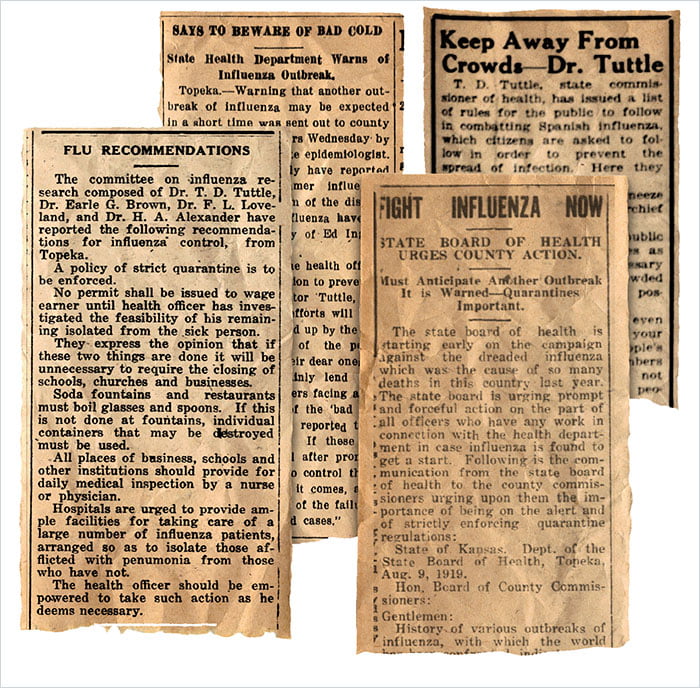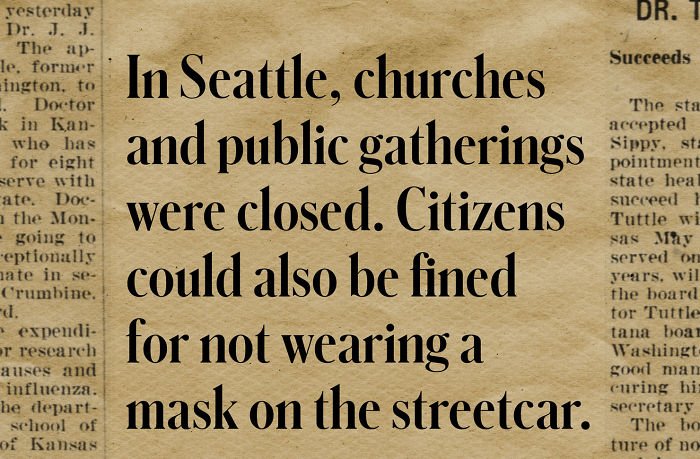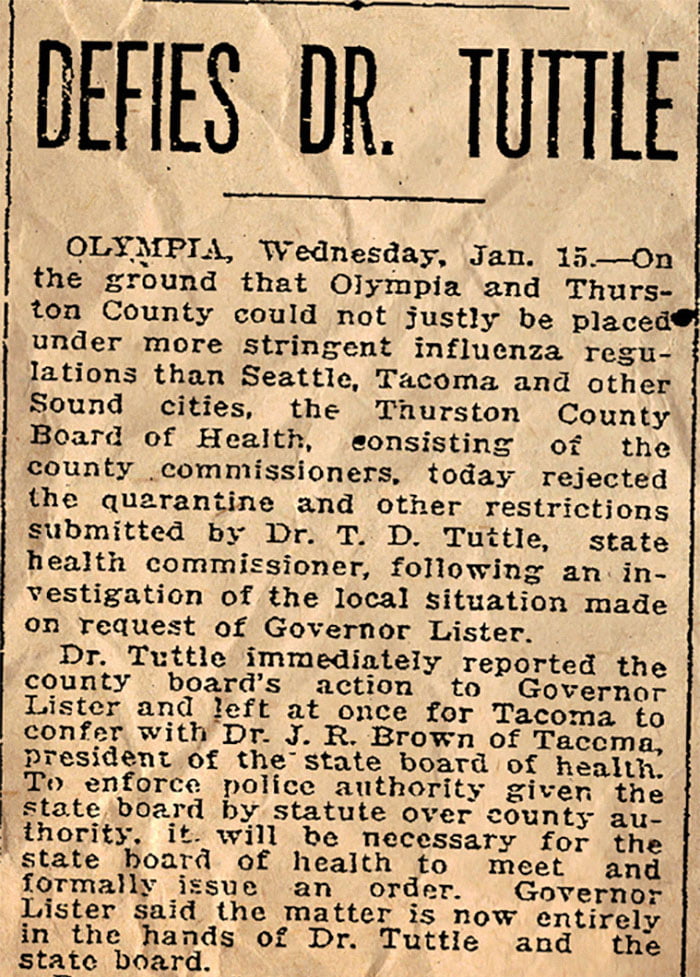Washington’s Health Commissioner during the Spanish Flu who not only is somewhat of a doppelganger of Anthony Fauci, but also both Dr Tuttle and Dr Fauci fought global pandemics late in their health careers, both men attended Ivy League medical schools and both were commissioned officers in the United States Public Health Service. Most importantly, both of these doctors shared similar advice for ending pandemics: social distancing, masks and quarantine among them.
In 1915, Dr Tuttle accepted a new position as Washington’s Health Commissioner. A few years later, in July 1918, the Spanish flu reached the Washington state.
In the beginning, 300 cases were reported but after that, the number started to slowly decline. It seemed as if the flu was retreating. In September, the numbers started rising once again. On October 5, 1918, Mayor Hanson took the advice from Dr Tuttle and closed the churches and other public places as well as introducing mandatory masks. After that, Dr Tuttle took it into his own hands to start spreading advice for fighting the pandemic by sending letters to various newspapers.

Those letters suggested, that this flu could be prevented from becoming epidemic with “the earnest, conscientious and intelligent help of every citizen of the State.” Like Fauci, the doctor advised people to stay away from public gatherings, to stay at home if any kind of symptoms become apparent and to wear masks in public places. “All public gatherings except those absolutely essential to the maintenance of life and to the prosecution of essential war industries were prohibited,” Tuttle wrote.
His strategy for Washington’s state seemed to be working

The only preventive regulation of statewide application that the Washington State board issued came on November 3, 1918, when it required that surgical masks of a specified size and thickness “entirely covering the nose and mouth” be worn in virtually all public places where people came into close contact with one another; the order also required that the proprietors of stores, restaurants, and cafes “keep their doors open and their places well ventilated” and that one-third of the windows in streetcars be opened when in use by the public (“Special Order and Regulation … “).
Vancouver in Clark County was one of the first cities in the state to aggressively address the pandemic. On October 7, 1918, acting on a report from the chief health officer, the city council ordered that “all places of public gathering, such as schools, churches, dances etc.” be closed (Vancouver City Council minutes). Two days later the town council of Monroe in Snohomish County approved a similar measure, as did Yakima, which later joined with Yakima County to lease a building owned by St. Michael’s Parish “for the purpose of establishing same as an Isolation Hospital” (Yakima City Commission minutes, October 21). On October 31 the ban on gatherings in Yakima was widened even further to include “all places where any kind of business is transacted … with the exception of drug stores, meat markets, restaurants, eating places, hotels and fruit ware-houses,” the last an apparent concession to the town’s leading industry (Yakima City Commission Minutes, October 31).
Like Fauci, who accused anti-maskers as grandma killers, Dr. Tuttle also spoke simlarly:
Similar bans on public assembly were imposed in counties, cities, and towns across the state. A small sample would include Seattle (October 6); Spokane (October 8); Pullman (October 10); Anacortes in Skagit County (October 15); Ferry County in Northeast Washington (November 17); tiny Wilson Creek in Grant County, where all children under age 16 were ordered confined to their homes (December 7); and Chelan, although it exempted schools (December 10). No corner of the state was spared, nor did the ordeal end with the new year. The Cowlitz County Council did not even impose similar restrictions until January 16, 1919, and White Salmon to the east was at that time still under siege.
However, people stopped complying to the mandates… perhaps because of the many doctors of the Anti-mask leagues across the nation who were scientifically proving them ineffective (SF mandated masks first and had highest infection rates), or perhaps (as with Covid), people realized that most people did not become infected, despite nearly universal exposure, nor did it kill but a fraction of those it did infect. The numbers have been extremely exaggerated and the cause was not a virus, but from vaccine mandates, new pharmaceutical medicines for common colds and flus that were making people sicker or killing them, etc.
Tuttle became more and more frustrated about the whole situation. But, basically, this time no one was listening to him. The doctor was described as belonging “to that old-fashioned school of citizens who believe laws and regulations were made to be enforced.”
Soon enough, Dr Tuttle was fired from his position as health commissioner in Washington.








